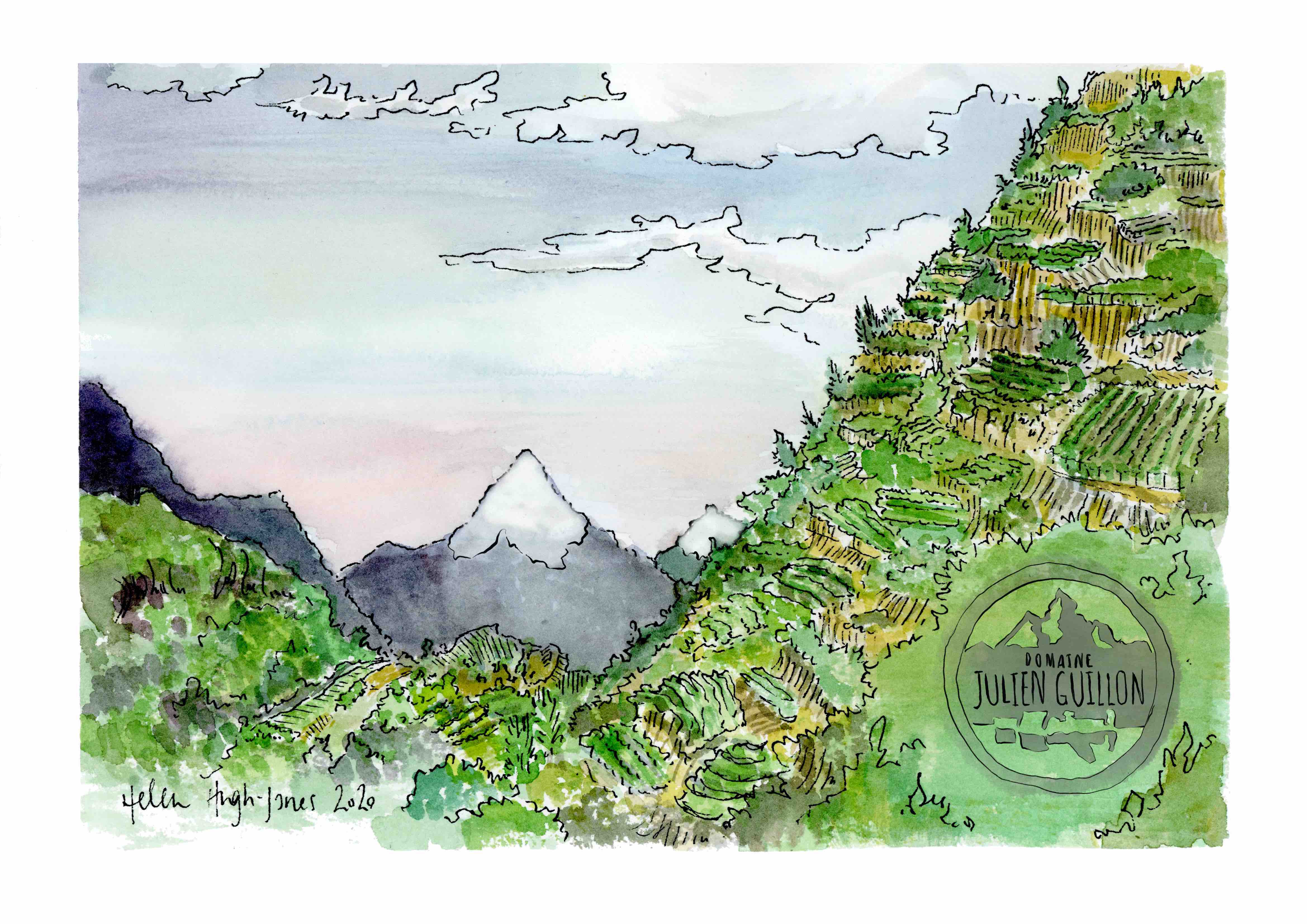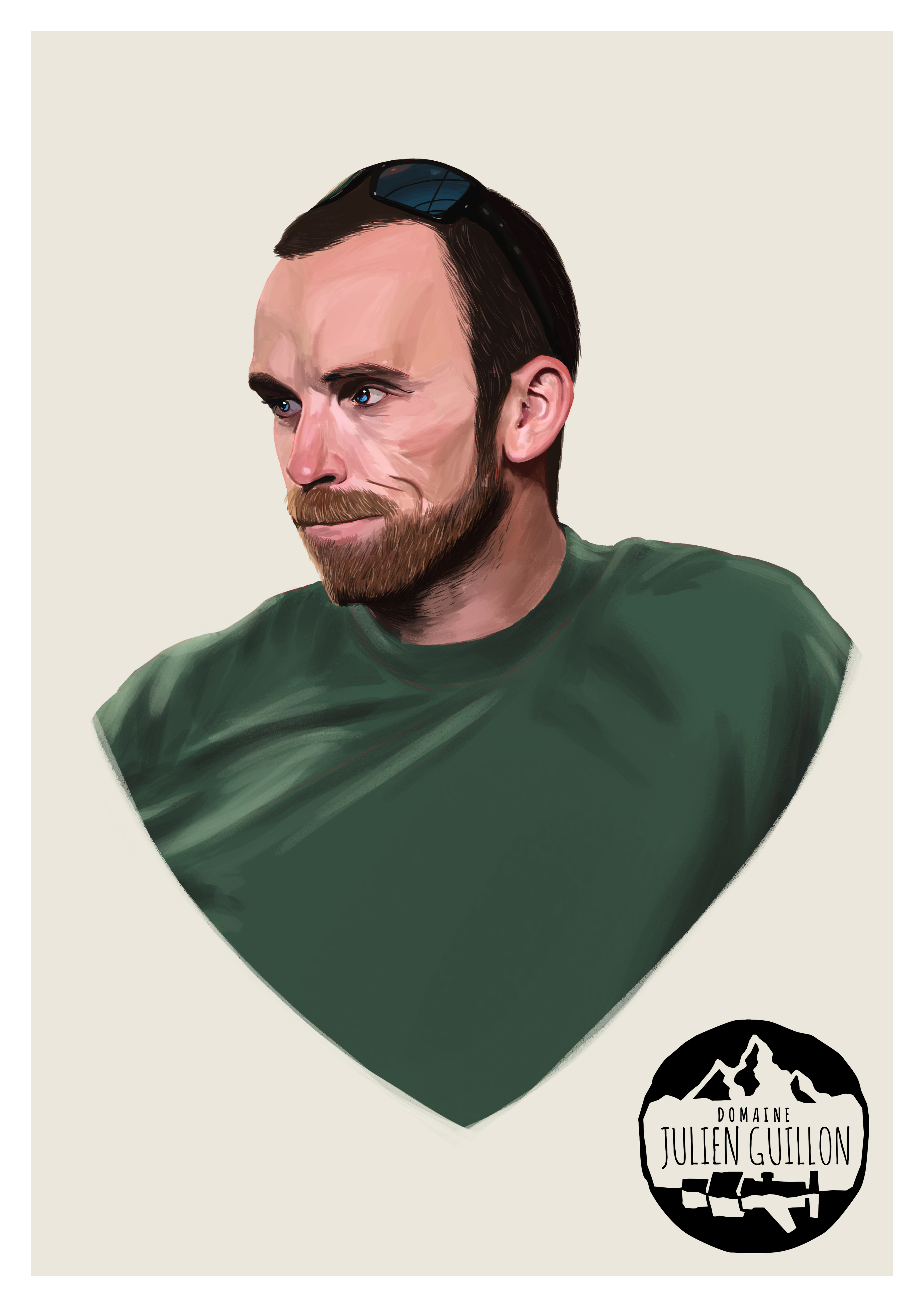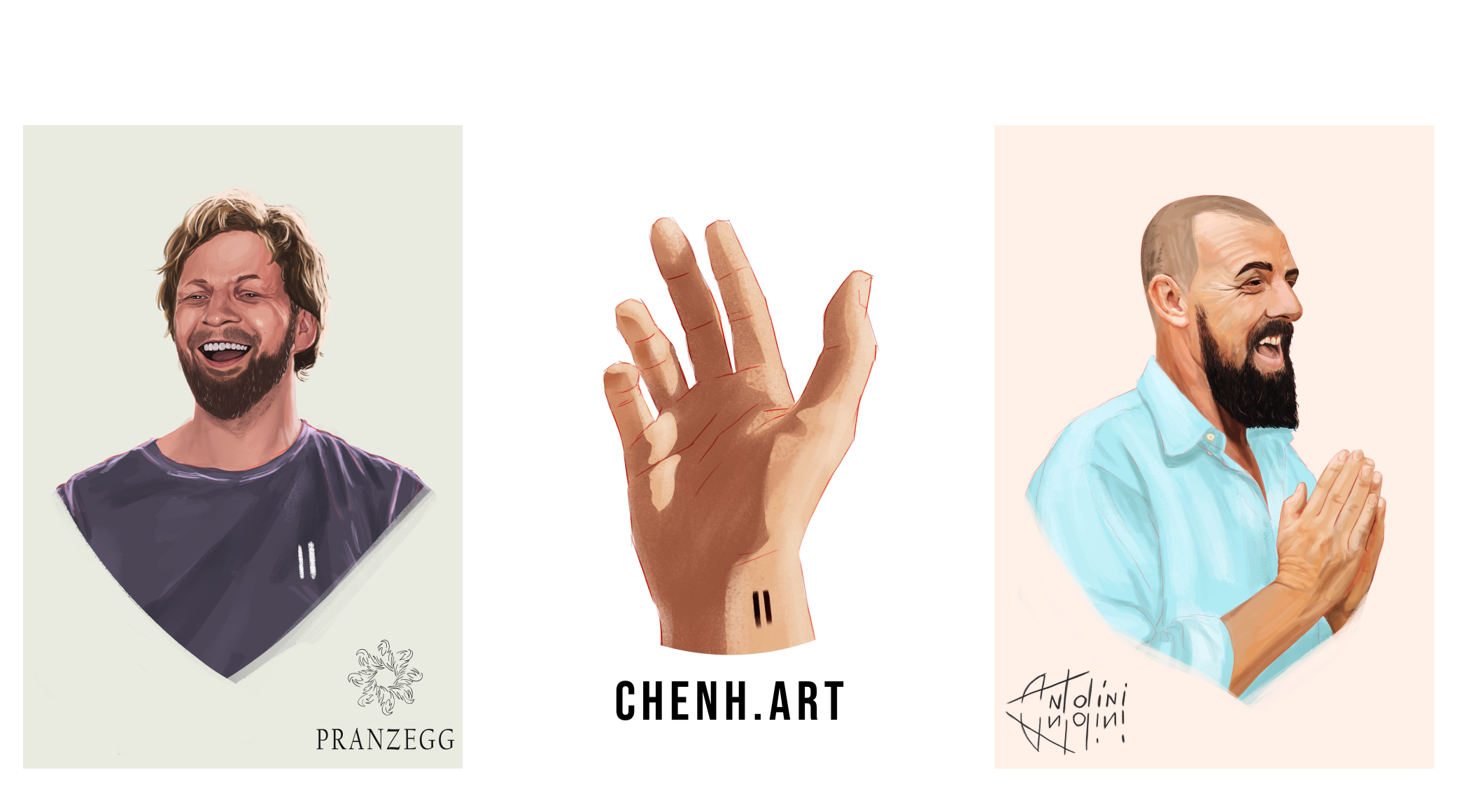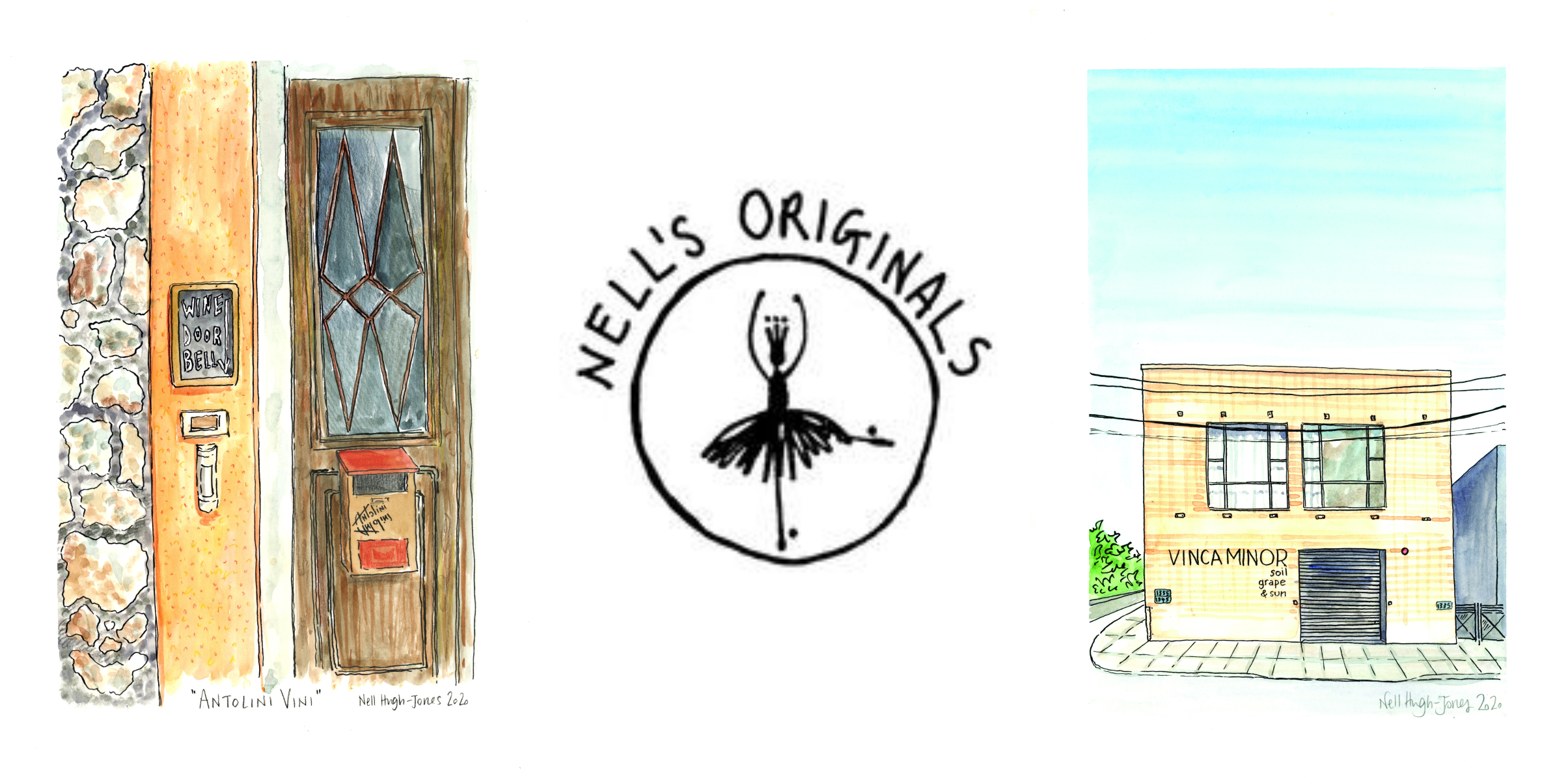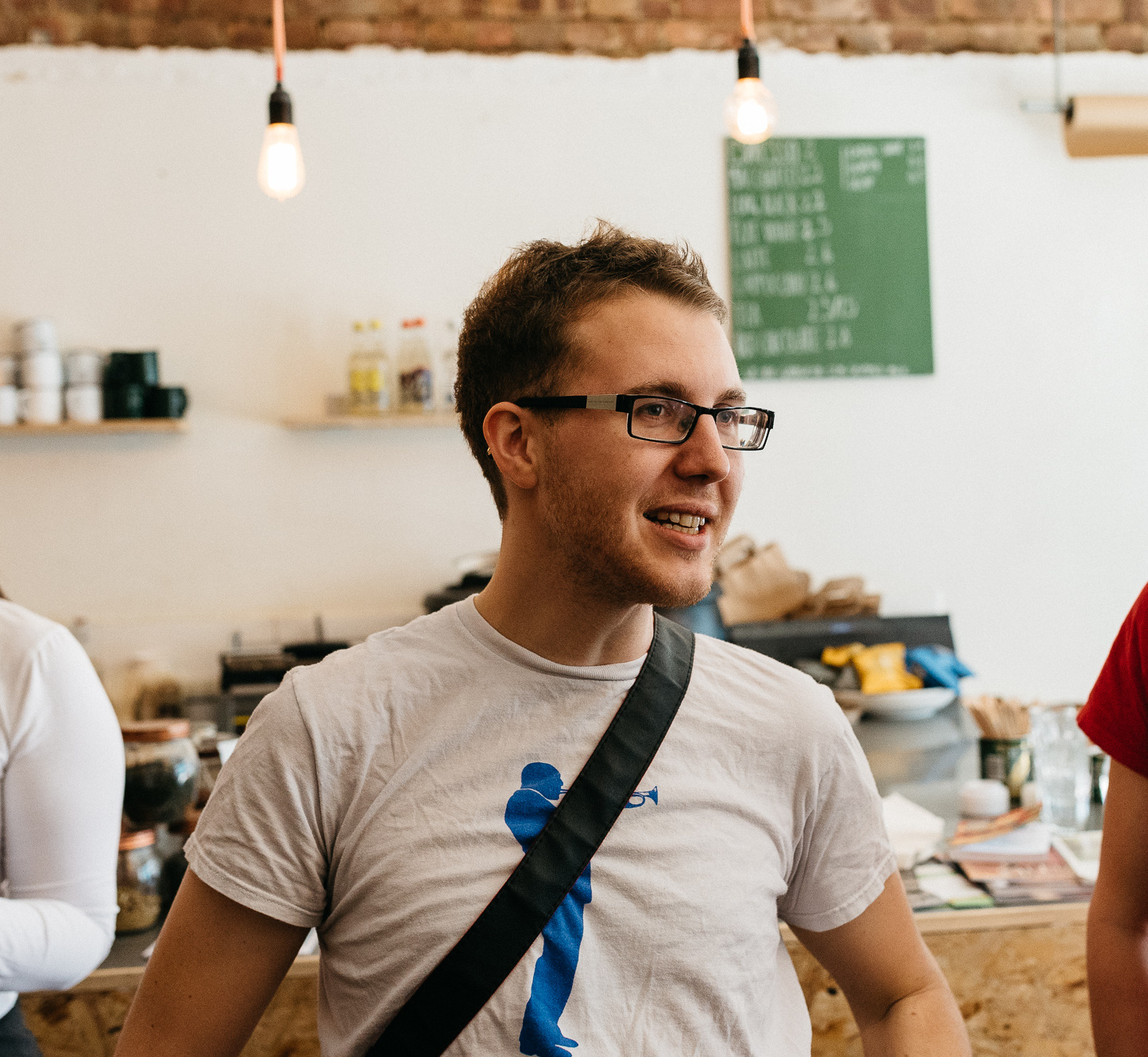Picture the scene. It’s late August, 2019, and my travel buddy Tim and I are trying to keep our balance on the steep slopes of Julien Guillon’s vineyards, deep in the Swiss canton of Valais. The landscape is fairytale-esque – if this were France or Italy, wine tourists would visit in their droves. Oz Clarke put it perfectly in his book, World of Wine – “Vines seem to climb vertically up the spectacular mountain faces, tiny villages perch on plateaux cut off from every other manifestation of life except their vines, and, even in the height of summer, the great mountain peaks glow with luminous snow.”
The Valais // Watercolour by Nell’s Originals
Order this print online here!
————————-
On inspection of his vines, Julien is trés, trés, trés, trés, trés content. I’m not exactly sure why because he’s mostly conversing in rapid colloquial French (thankfully translator Tim is keeping up), but it seems that Julien is excited about the progression of his grapes with harvest a couple of months away. The weather gods have not been kind to him over the years, but he’s hoping for a great return this time around.
Julien is a one-man band – a passionate young winemaker who truly loves caring for his vines (or his “daughters”), and is deeply committed to natural wine-making with minimal intervention. His wines are fresh and exciting, and present classic Valais styles in a new light. He’s keen for Switzerland to embrace natural wine, and so he’s very active on social media, posting regularly on Instagram to engage with his audience and spread the good word!
Julien Guillon | Artwork by Damon Chenh | Order this print online here
—————-
After a lap of the vineyards, via some sexagenarian Pinot and a rogue absinthe bush, we decamp to level ground at his wine facility in Sion, down in the valley. Hours and meal times disappear as we sup living wines from barrels and clay pots. Julien’s juicy reds steal the show, and we have countless “final pours” of his glou-glou gamay as the sun sets over the Valais peaks.
Video Player
00:00
00:00
Those magical moments will live long in the memory, but to give you a little more insight into Julien’s methods and madness, I caught with him once more. After a few Google translate mishaps (bras = arms), we managed to get an interview together in which I discover, amongst other things, that winemakers fear ” The Ice Saints”. Who knew?
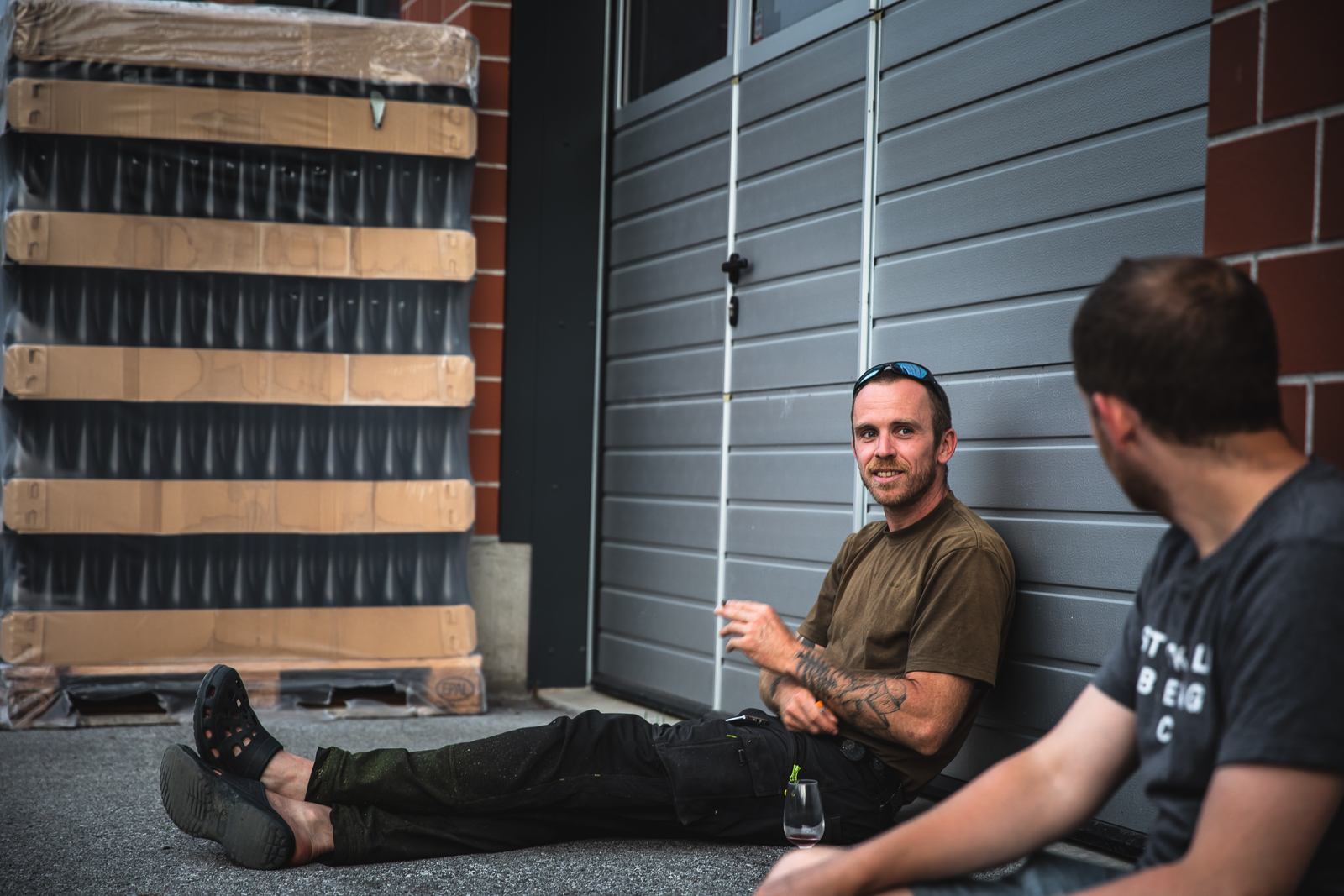
———————–
Hi Julien! How is it going? How is everything going with the current situation?
It’s OK, but the situation is critical. The field has lost to date 95% of its export sales but we have just enough funds to survive the year, as long as sales improve next year.
Fingers crossed. Is there any way we can support you right now?
Yes! You can order my wines via the domain’s website (v2.0 now up). I’ve been working on a new online shop which will be revealed soon!
Valais is truly an incredible setting for a vineyard, can you describe your paradise?
Mountain. Mountain. Higher mountain!
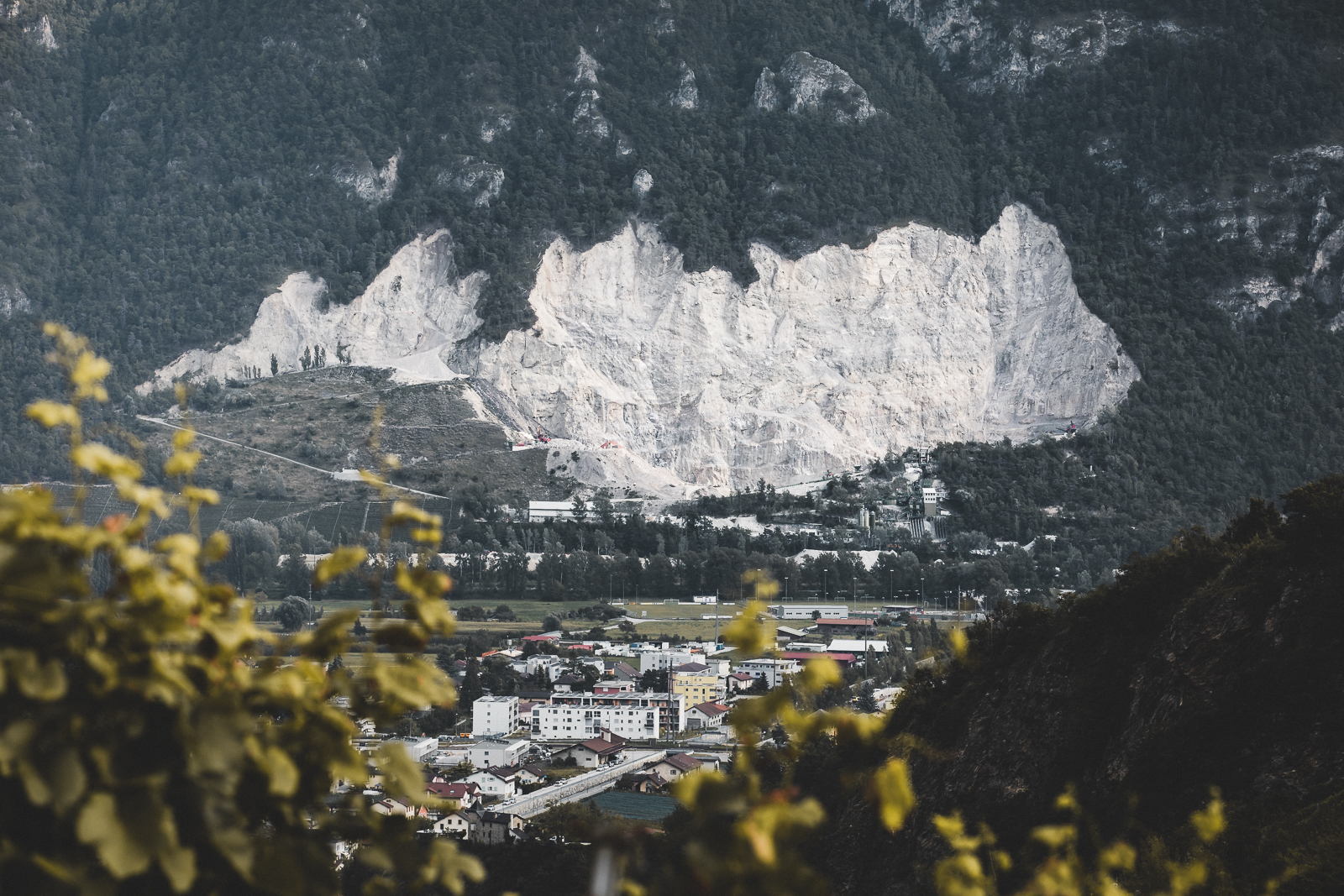
————————-
Hah, yeah that pretty much sums it up. The vineyards are incredibly steep – what unique challenges does it create and how do you overcome them?
It takes a lot of motivation to work with on steep vineyards and it’s very physical work. As a former mountaineer and climber, I can cope with it! The danger, the tenacity, and the physical effort knows me well.
I guess that makes it impossible to use most machines, although I imagine you prefer it that way!
I often say that I only have 4 tools! My legs, my arms, my brush cutter, and my atomiser.
Could you tell us a little more about the soil, topology and climate, and how it affects the wine / winemaking?
The Valais has magnificent terroirs, and each municipality is very different. We get roughly 300 days of sunshine per year. The largest vineyard in the domain here is at 900m, and this sunny location leads to more freshness in wine and more appealing phenolic compounds, in my opinion. I always look to harvest with perfect phenolic maturity in the pursuit of making great wine!
Could you give a beginner’s guide to phenolic maturity, to a non-chemist!
Well, to put it simply, it’s when the seed turns from green to brown and the roundup (the central frame of a bunch of grapes) turns from green to yellow!
[Read more about phenolic compounds and maturity / ripeness here]
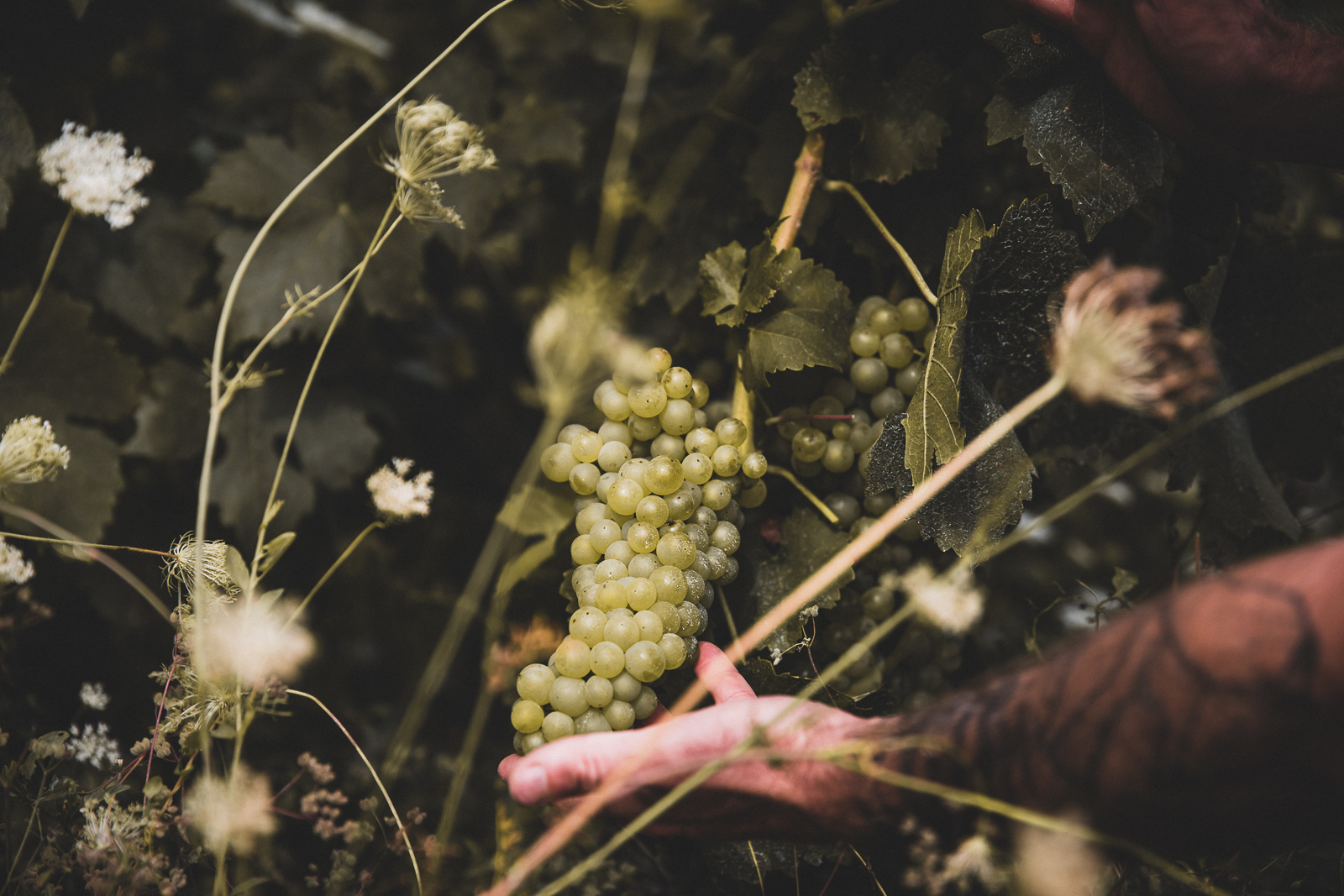
————————-
Outside Switzerland, wine lovers are not too familiar with Swiss wine – is that how you want to keep it, or do you hope more people find out what’s going on?
Unlike the rest of the country, my estate exports 95% of its wines. Meanwhile, the Valais region (my canton) exports only 5%, and then the total Swiss national export is only 1%!
The export game chose me, not the other way around – Switzerland isn’t quite ready for natural wine. It’s one of the only countries in Europe that is lagging behind but it is changing, slowly! My estate makes very straight carbon-free wines, and Swiss customers are starting to approach me for them. In light of the pandemic, I would like to sell more on my own soil too. With the website v2.0, the online shop, options to visit and tasting at the estate, and more, I think that it will change!
"I often say that I only have 4 tools! My legs, my arms, my brush cutter, and my atomiser." Julien Guillon
What are the native or most common grape varieties in Valais?
For indigenous grapes, we have amigne, arvine, cornalin, humagne, and reze. More widespread varities that you will find here are pinot, gamay, chasselas, sylvaner and syrah.
Are there any grapes that you like to work with in particular?
Pinot Noir has to be my favourite grape as I learned my skills in Burgundy, working with my brother from a young age.
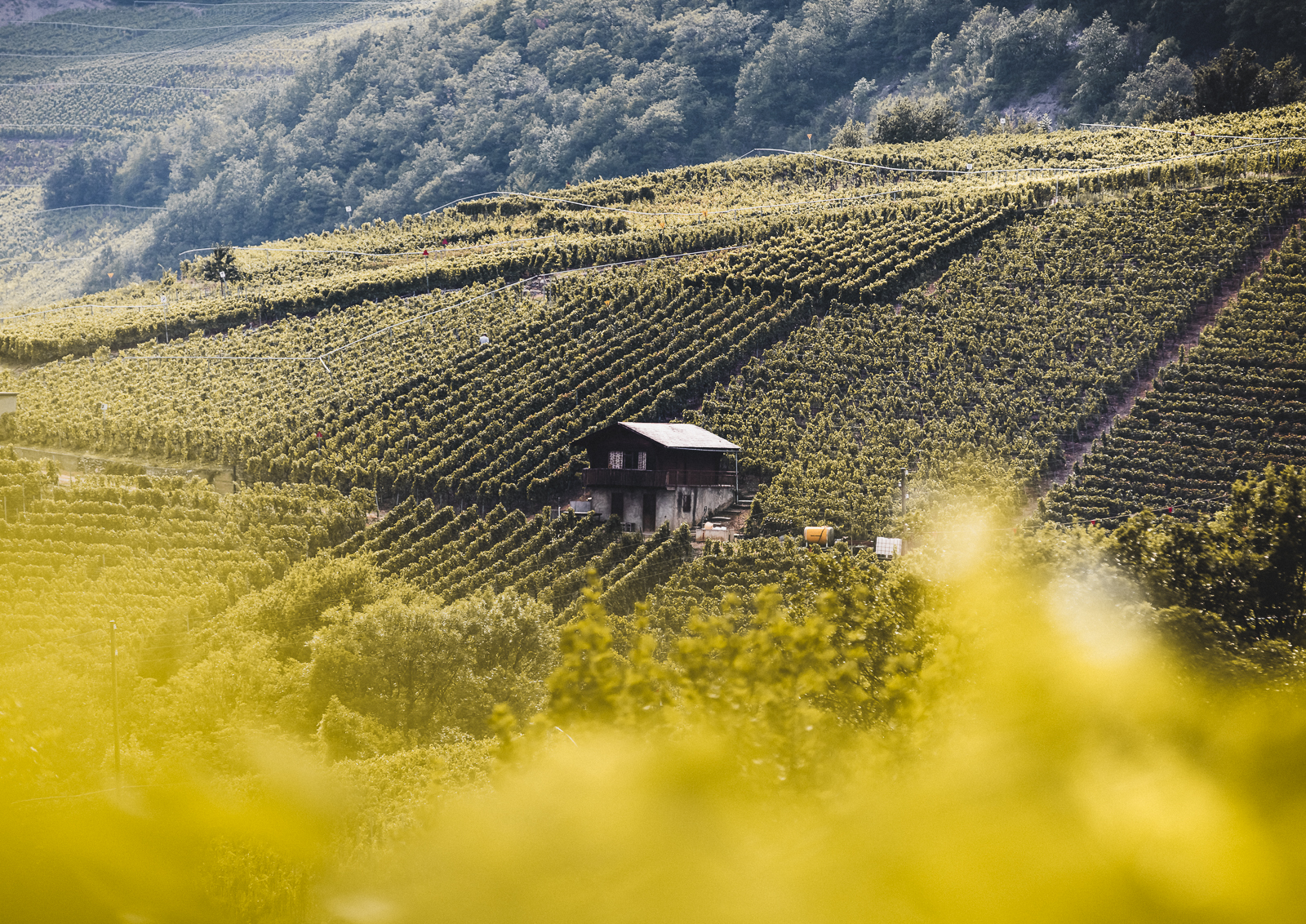
Valais Vineyards / Order this print here
————————-
I remember you had particularly old vines, including a 1962 Pinot?
The oldest vine is 80 yo Muscat – I have to blend it as I only have 60 square metres of it! Then I have a Chasselas which is soon to be 70 yo, and then yes my oldest Pinot is around 60 years old.
How did you get into natural winemaking?
After working with my brother, I studied viticulture at the Lycée Viticole de Beaune, but this was more conventional. Really it was thanks to my sommelier mentor – when working at a wine cellar in Carouge, I fell in love with natural wines. Also, as I am asthmatic I avoid sulphites! There are still some naturally occurring of course but at low doses.
[Read an opinionated FAQ article on sulphites in wines here]
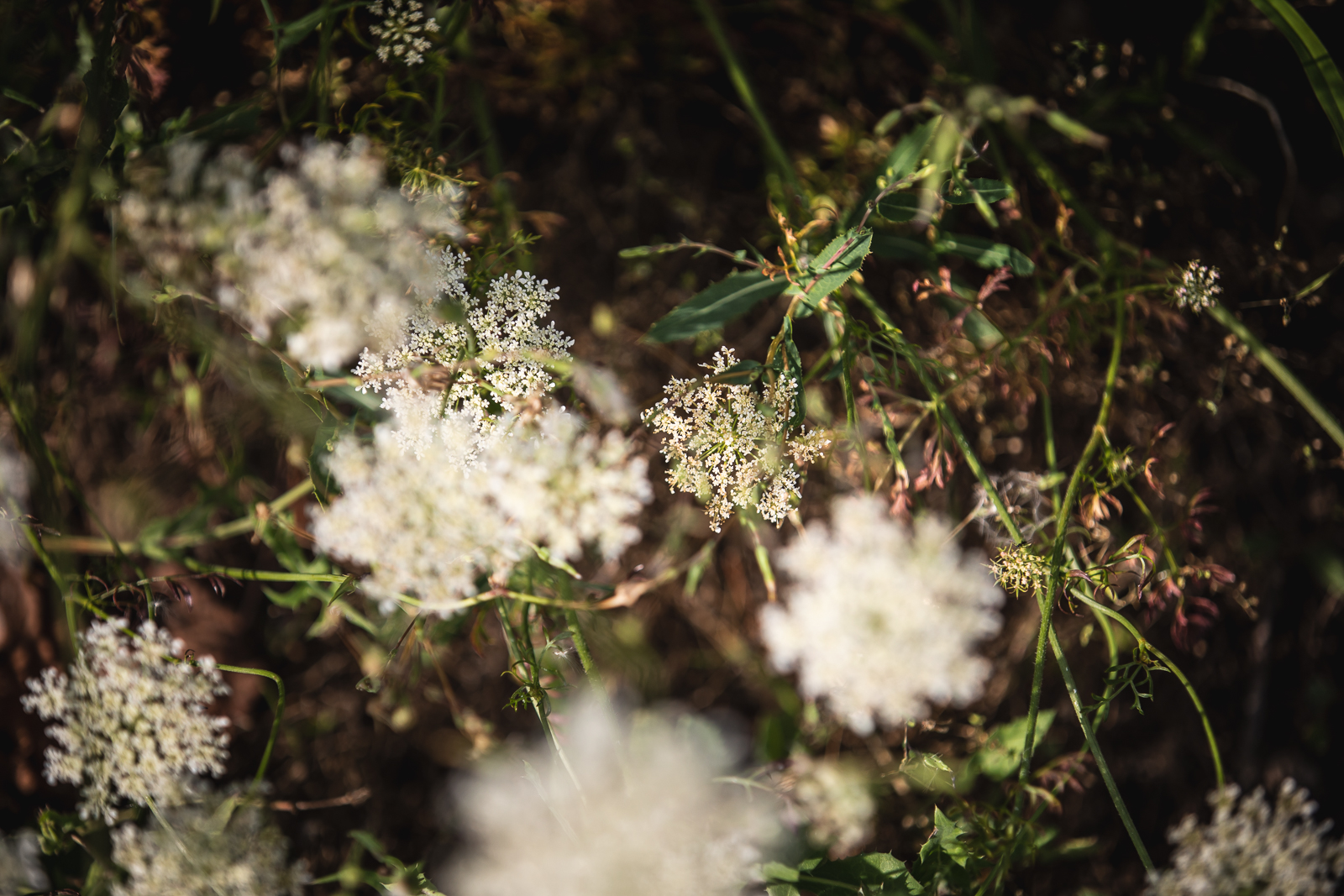
————————-
Allergic to mass-produced wine! I’ll have to use that one at parties. How do you approach your winemaking?
At the start I was just finding my way. Since 2019, I’ve mixed my winemaking techniques from 2017 and 2018, keeping what worked. I adapt to the grapes, but I aim to harvest whole clusters and then usually follow this with a long maceration. I do a lot of carbonic maceration, and I don’t do remontage (pump-over method) or “wetting the hat”. Occasionally I might push the cap that forms down with my hands, just enough to moisten the top. But most of the time I put the grapes in the tank, close it, and come back a few days / weeks / months later to press.
[Matt : Read more about carbonic maceration here – you’ll no doubt have come across its results in a glass of Beaujolais Nouveau. In short, it’s the process of whole grape cluster fermentation in a sealed tank filled with carbon dioxide. This aims to produce fresh, fruity wines with low acidity and low tannins. And if you want to know your pump-overs from your punch-downs, click here for a quick explanation of both!]
"I eat Vine, I sleep Vine, I dream Vine, I drink Vine, I dress Vine." Julien Guillon
I know that the weather can be extreme in Valais, have you had particularly difficult years since your beginnings?
Three times since 2017! Two vintages struggled with frost, and another had to deal with two bouts of hail. Thus far we have not had frost in 2020, and we have just passed the fabled days of “Les Saints de Glace” (“The Ice Saints”). I need to get at least half of the grapes from vine to wine so that I can break even!
I hope 2020 is kind to you! I will be namedropping Les Saints de Glace next May. We spent an incredible few hours trying wines at your facility. Which of these wines could you consider as the most accessible, with which people could to start?
Perhaps we might start with Chase la de (Chasselas), or Dio Dio de Fifi (Diolinoir). I like to think that most of my wines are accessible to everyone, if the drinker is keen to listen and learn about natural wines and my philosophy.
We tried various bottled whites that day, Cuvée Heidi, Le Gris Gris de Fifi – what do the names refer to?
Heidi is my dog who always goes to this part of the vineyard where there is Savagnin. And Gris Gris de Fifi is the Pinot Gris de Frimin, the owner. Each vintage tells a story!
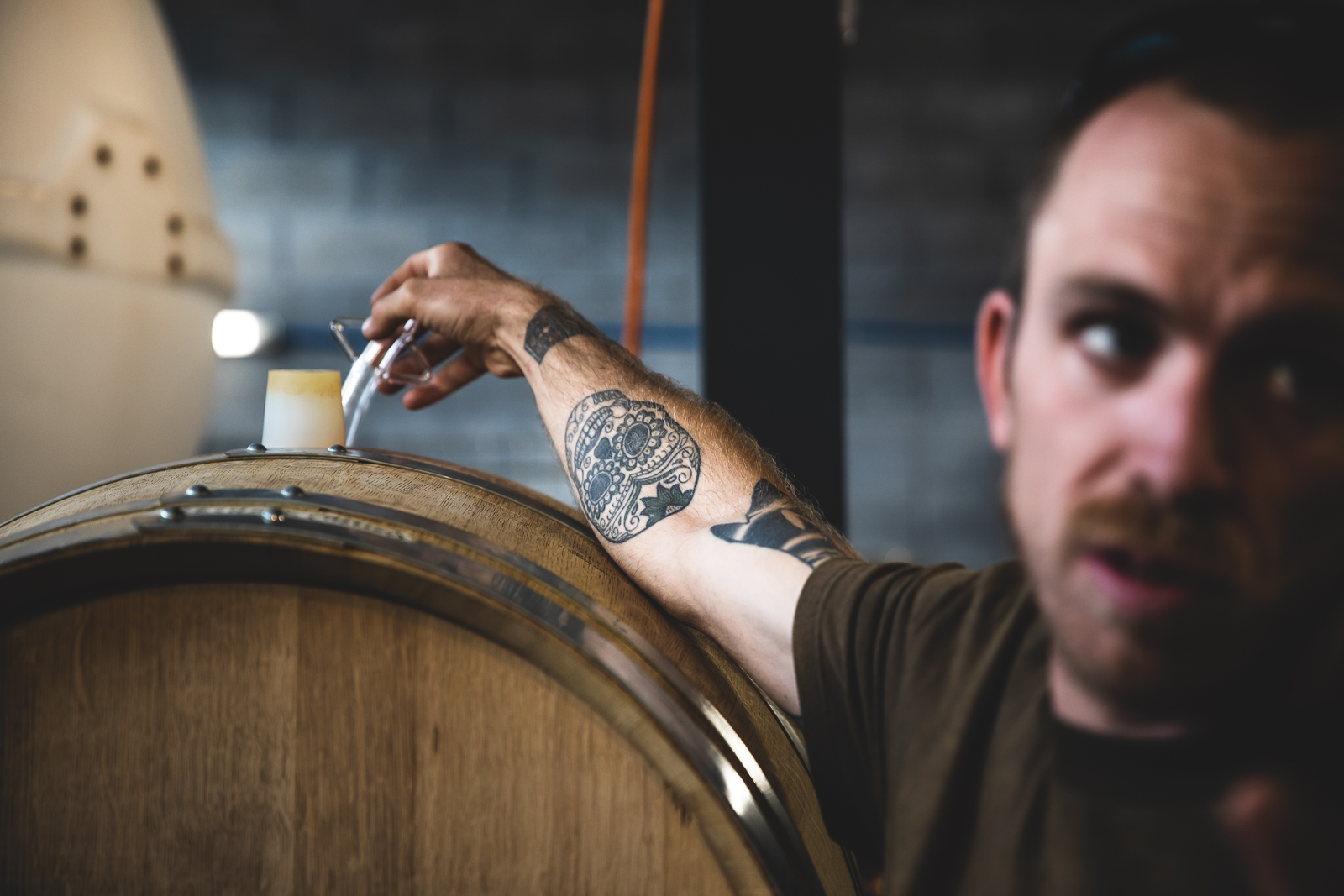
————————-
The only Julien Guillon bottle I have left now is Le Petit Bidon, which I believe is a chasselas? Could you explain a bit more about this wine before I crack it open?
The Chasselas is flinty and very floral on the nose. It’s also floral in the mouth but it has a salty dimension because of the terroir in Fully.
[Matt : Feeling flinty? Decode some tasting notes for your lexicon here]
You use different ageing methods, from barrels to various amphorae. Could you explain why you like to use certain containers for different wines, or is it just an experiment in progress?
At the start I wanted to work only with amphorae and stainless steel tanks, but after tasting the wines I changed my mind, and now I am keen to age them in oak too. I have left a lot in stainless steel for now but in time I would like to have a cellar of 200 barrels – for me, a long ageing period (48 to 60 months) leads to magical wines!
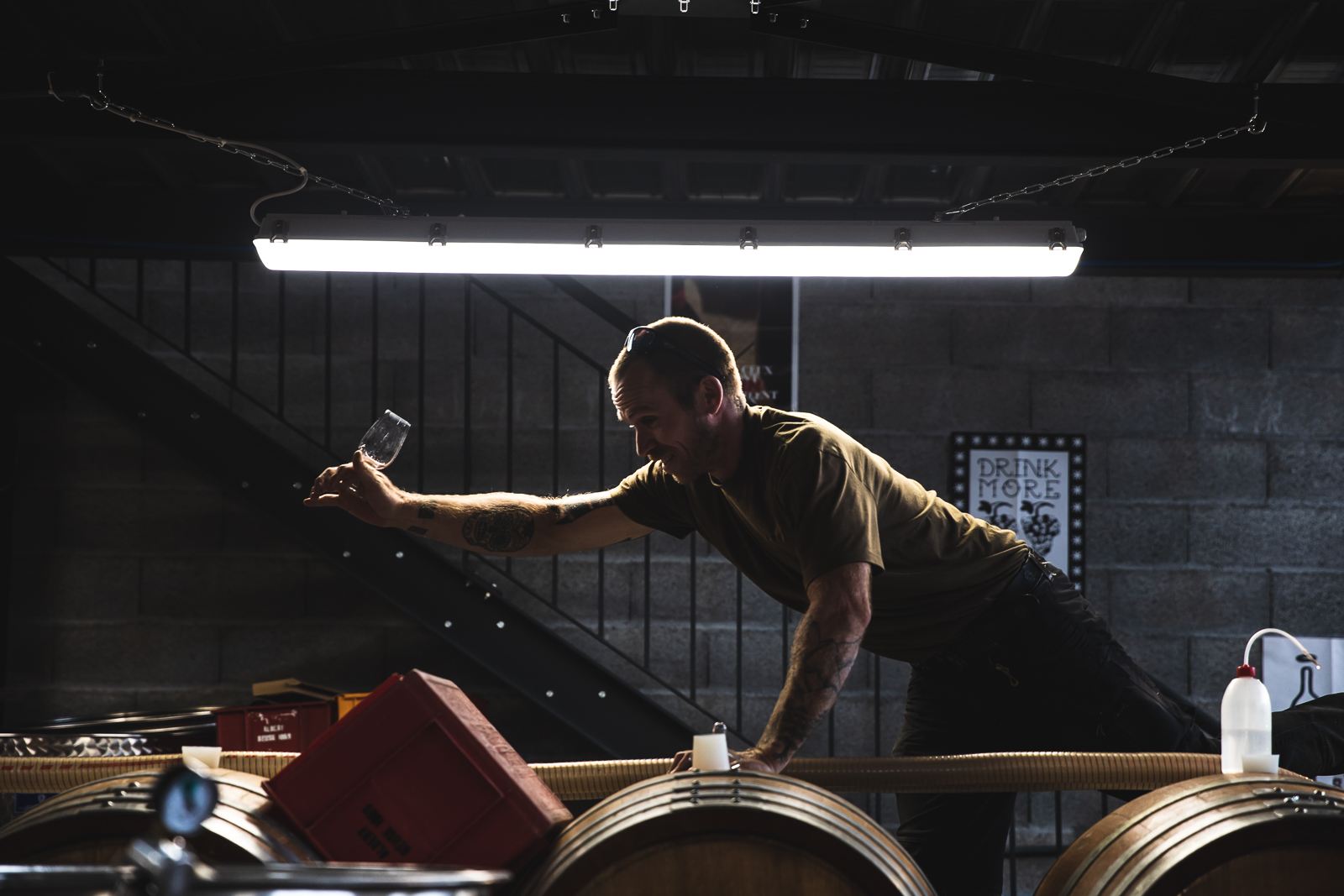
————————-
Last year we tasted incredibly juicy reds straight from the source – are they bottled now? We want them!
Yes, I hope to release eight cuvées in June once the online shop is open!
Can you give us any more clues to what will be revealed?
Haha, no – you will have to see for yourself! The online shop will be only be selling to Switzerland for now, so you may need to go through an importer or organise a special delivery.
Good to know! Finally, once we are all free to travel and explore again, where else in Sion and in Valais should we look for food, drinks and adventures?
Phew – this is difficult for me because I eat Vine, I sleep Vine, I dream Vine, I drink Vine, I dress Vine, I’m a slave to my Vines and I’m happy about it like that.
Sounds good to me. Thanks for chatting, and I hope we will see each other soon once this is all over – I’ll be back in the Valais in a flash! Good luck with the new shop, and fingers crossed for a frost and hail free 2020!
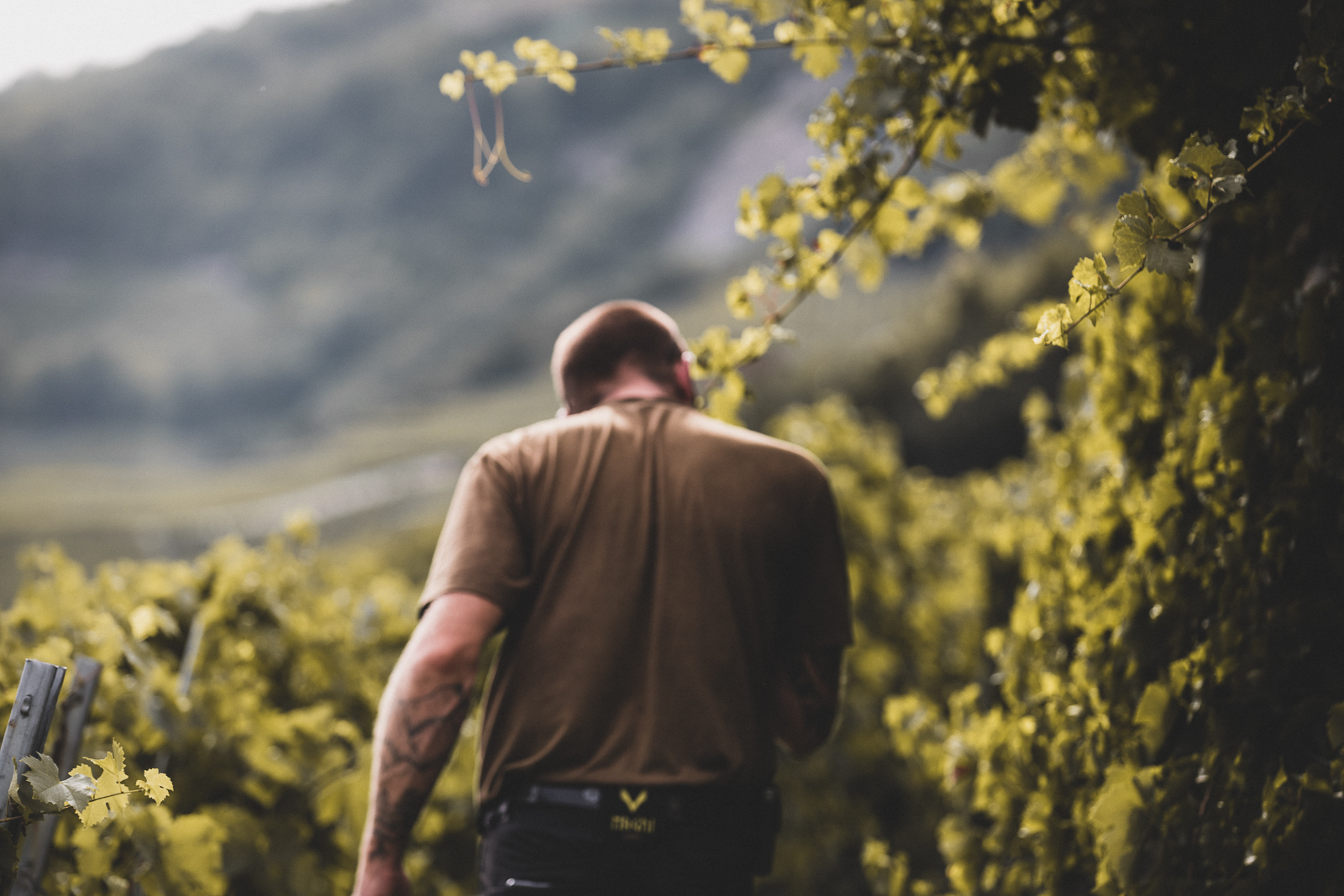
——————————
For more info on Domaine Julien Guillon wines, head to the website: www.domainejulienguillon.com
Or follow Julien on Instagram / Facebook!
—
This is the fourth in a new series of interviews across the drinks industry – keep track of them in The People section, or sign up to the Matt The Latest newsletter at the bottom of this page.
Thanks once again to Nell Hugh-Jones at Nell’s Originals and Damon Chenh at Chenh Art for creating bespoke artworks for this article. You can find these works and others in the series on sale alongside my prints on Matt The Prints:
MTL x Nell’s Originals // MTL x Chenh Art
Check them out and support independent artists by purchasing the prints!
————————
Thanks also to translator Tim for sorting out some language barriers!
Scroll down for more photos from our visit to Domaine Julien Guillon
